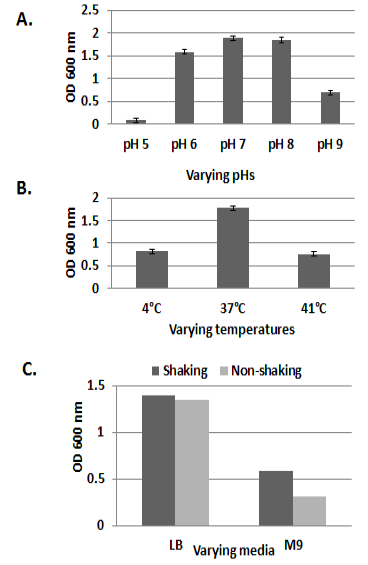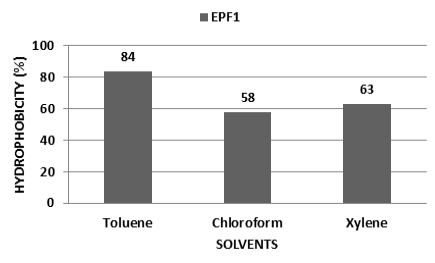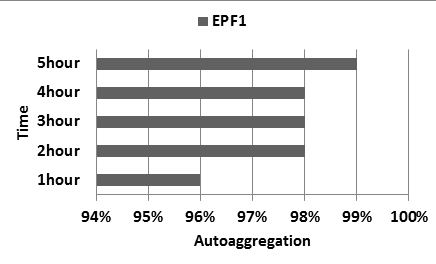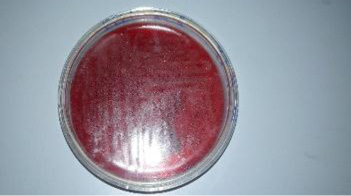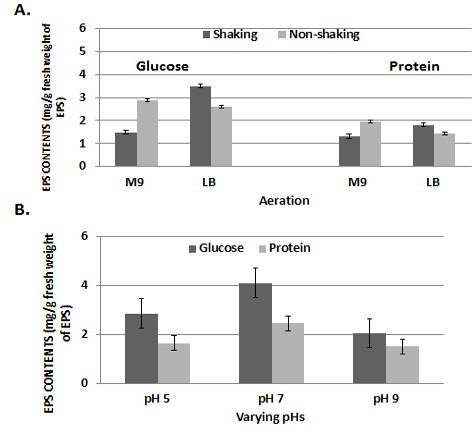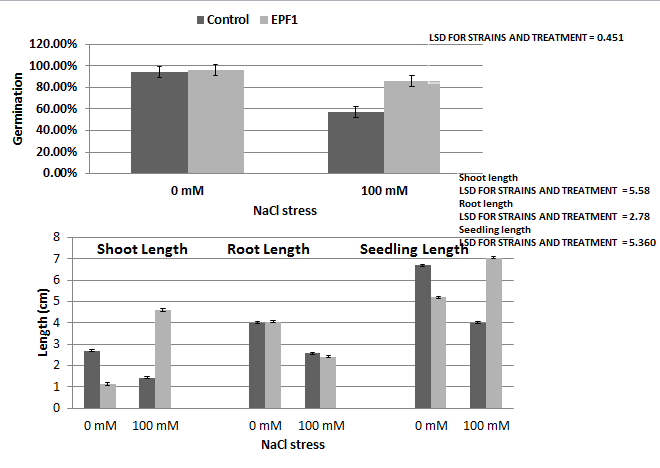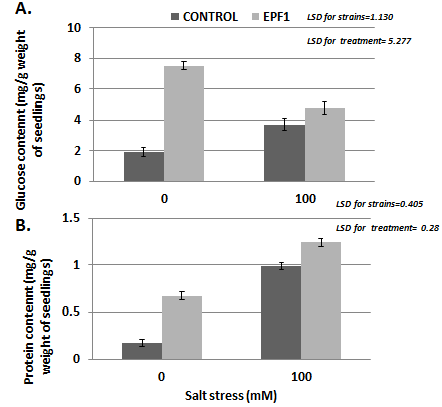Analysis of Cell Surface Properties of Exiguobacterium aurentiacum Associated with Lumbricus terrestris and its Potency as Biological Inoculants
Analysis of Cell Surface Properties of Exiguobacterium aurentiacum Associated with Lumbricus terrestris and its Potency as Biological Inoculants
Syeda Shazia Bokhari, Aisha Waheed Qurashi*, Roheela Yasmeen*, Fouzia Yasmeen, Nabeela Nayab, Uzma Rafi
Phylogenetic tree by neighbor joining method showing evolutionary similarities of this strain EPF1 with related taxa.
Effect of varying pH, temperature, media and aeration on the growth of strain EPF1.
Hydrophobicity response of EPF1 towards organic solvents (toluene, Chloroform, and xylene).
The observed gradual increase in auto aggregation response in EPF1 till 5th hour.
Qualitative test for EPS: Light brown colored colonies as positive result.
EPS Quantification under different physiological conditions (media, agitation and pH) of culture media.
Growth parameters for plant A: Percentage germination of seedlings. B: Length parameters (cm) of seedlings.
Biochemical parameters for plant growth A: Glucose content mg g-1 weight of seedlings. B: Protein content mg g-1 weight of seedlings.







